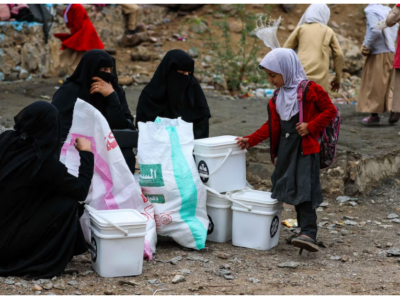
Image via canva pro. Free to use.
To aid our writers and editors in their work of producing quality, intersectional content, we have put together this series of WordPress tips and reminders. This series covers common challenges you might face in the writing and editing process and offers clear solutions complete with screenshots and links to examples.
This series is meant to supplement our existing guides and act as brief, easy-to-access explainer pieces. Please remember to see our WordPress Guide for a full explanation of our rules and posting process.
Interviews are a great format to write GV stories as they align with our mission to bring unrepresented voices to the fore. Here are a few guidelines and tips for conducting, editing, and publishing interviews.
Here are some examples of excellent GV interviews.
- Hong Hong Veteran Wikipedia Editor says ‘Wikipedia’s policies are vulnerable to abuse’
- ‘The fight for human rights begins in the kitchen': Interview with Czech writer Radka Denemarková
- ‘This Arab Life': A personal excavation of the ‘silent’ Arab generation
And here are some tips on how to create an effective Q/A article for GV.
Language: remember, we love language diversity, so always keep the quotes in the original language, then add translation in the language you are using to write the full story.
In some cases, interviewees insist on being interviewed in English — try explaining that we might have many versions in different languages.
Interview format: There are no rules on where to record an interview: it can be done with video, with sound, or in written form. Note that written form allows for brevity if you specify in advance that the total responses should not go beyond one thousand words, but audio or video also allows for more texture, and spontaneity and can lead to new and more interesting questions and answers. If you do record, there are apps that can transcribe sound with great accuracy (Descript). In the end, it’s up to you!
Interviewer: in the introduction, you should use a sentence along those lines: “in order to better understand the issue, Global Voices interviewed XYZ…”. We recommend that you explicitly say how the interview took place: “interviewed in person/over WhatsApp/ by email”.
When describing the interviewer in the quotes, you have two options: you can stay with GV and write: “Global Voices (GV): Could you talk about…”. Or you can use your full name and write: “Aliya Hossein (AH): How would you explain…”.
Quotes: Very important: always keep track of the quotes, whether in recorded sound or written format, in case the person disagrees with the story later and argues they did not say such a thing (it happens, not often – but it does, and then you are safe as you can produce the original).
There are cases when the interviewee wants to review their quotes before publication. This is fine and can be a good practice also if interviewing people at risk. It’s also helpful in making edits to clarify the quotes and correct grammar. There is no obligation, though, for you to send the full story before publication, as we maintain our independence as a media outlet.
Also, it is a good practice when contacting a potential interviewee to mention in the email that “the interview will be edited for brevity and style.”
If people give an interview in a language they are not very fluent in and make grammatical mistakes, we recommend editing for language.
Adding context to quotes: when the interviewee mentions facts or people that are obvious to them but might not be to outsiders, it is OK to either add a link (Wikipedia-type) or add a quick note in brackets [] just after the term, or date, is mentioned to provide context and allow for smooth reading across languages.
Interviewee: do request a one- or two-sentence self-description from the interviewee. Do make sure to edit to keep it short. If some provide a long list of titles, published books, or articles, keep just one or two. As best practice, we also ask for a portrait photo and make sure we can republish it (so do ask for the name of the photographer and permission to use it under CC). There can be cases when, because of security, it is better not to have a photo.
Having other images besides the portrait photo is always a good idea. Videos are also an option.
Story format: There are basically three possible formats for a final story based on interview(s).
Q&A with one person: short intro, followed by 3 to 5 questions, portrait image
Interview with one or more persons: quotes interspersed with text for context
Profile: a fifty/fifty text where direct quotes alternate with text and/or indirect quotes. It can also be more about the person themselves than a topic.
Overall an interview-style story should remain within 1,200 words — there can be exceptions up to 1,500 but remember it diminishes chances of translation.
Post-publishing: Don’t forget to send the story back to the interviewee once published. Also do thank the translators and do also send the translations to the interviewee as they appear (you will often experience a Wow! moment from them ;-) Remember the interviewee is very likely to share the story in their vast networks.



